Mayan Origins in Ancient Southern India
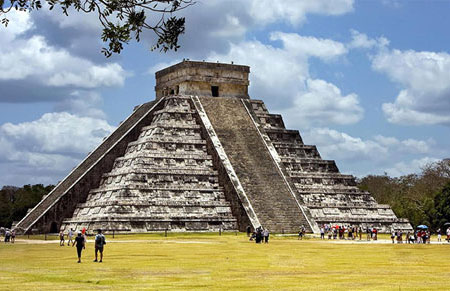
Note the temple pictured above and its resemblance in color and style to that of the Egyptians. South American pyramids are of course related to Egyptian pyramids. If the Mayans have much in common with the Egyptians, then they must share a common origin. The Egyptians come from Southern India.
“Under the reign of Viswamitra, first king of the Dynasty of Soma-Vanga, in consequence of a battle which lasted five days, Manu-Vina, heir of the ancient kings, being abandoned by the Brahmans , emigrated with all his companions, passing through Arya , and the countries of Barria, till he came to the shores of Masra [Cairo].” (History of India, by Collouca-Batta). Unquestionably this Manu-Vina and Menes, the first Egyptian King, are identical.
Arya, is Eran (Persia); Barria, is Arabia, and Masra, was the name of Cairo, which to this day is called, Masr, Musr, and Misro. Phœnician history names Maser as one of the ancestors of Hermes.
“Egypt herself had, in those unknown ages when Menes reigned received her laws, her social institutions, her arts and her sciences, from pre-Vedic India.”
Menes is undoubtedly the Manu of the second subrace (5.2 Ancient Egypt) and there is a close connection to India which persists to this day – as any traveler to both nations will attest. If the Mayans have a ‘perfect identity of the rites, ceremonies, traditions’ of Egypt then it is further proof that their genesis is in India, also known as ‘Bharata’ in ancient times.
“There is definitely an important connection between the old Vedic people and Maya-ancestors. The Mayas are actually referred to in The Mahabharata, one of the main Hindu scriptures, as a tribe having left the Indian subcontinent. There are sources who have revealed those people to be the same as the Nagas, one of the oldest Indian tribes recorded. Those Nagas seem to have been a people, later called Danavas, with a capital Nagapur. They are referred to in another main Hindu-scripture, the Ramayana, as belonging to a Naga-Maya tribe, who is said to have transmitted their culture towards Babylonia, Egypt and Greece.”
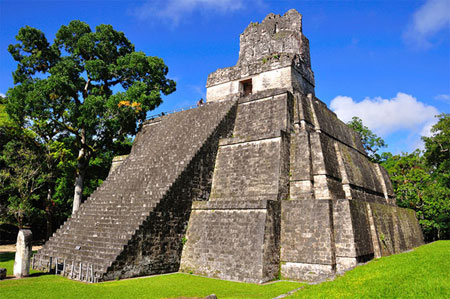
Naga is the Sanskrit word for serpent or snake. The feathered serpent represents the Mayan God Kukulcan or Quetzacoatl, a Christ/Krishna-like figure. In those days the ancient serpent religion referred to the Serpents of Wisdom. Mercury or Hermes (Narada – see further in text) – his symbol is the caduceus: two serpents entwined around a staff.
“The four principal groups in ancient India were the Asuras (Assyrians or Indus Valley people), Panis (Phoenicians), Yakhus or Yakshas (subjects of Kubera, god of gold and treasure a.k.a. Nagas) and Mayas. We know them today as the Dravidians (Tamils, Malayalam, etc.)
The non-Indus Valley people in ancient days were exceedingly superstitious and fearful of the Mayans. The latter were excellent international shippers and traders, builders and astronomers. Their superstitious enemies thought their accomplishments had to be magic and beyond human ability. They were ultimately driven to Ceylon where they inhabited the province of Maya. Later, they went to the Americas, having been taken there by Kubera and his Yakshas.” ‘Ceylon’ in those ancient times was more than likely the now sunken land to the south of India and connected geographically to the Ceylon of today, Sri Lanka. This is the ancient Tamil country of which today’s Tamil Nadu in India is but a small remnant:
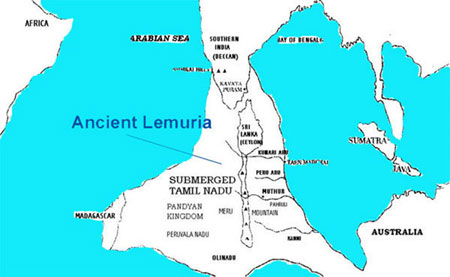
Ancient Map of Tamil Nadu and Kumari Kandam
The skill of the Mayan astronomers is also well known:
“Recent studies suggest a link between Indus Valley and Mayans of Central America. The studies focused on the calendars of the two advanced civilizations. The Indus Valley inhabitants followed a calendar based on the movements of Jupiter, and the Mayans followed one based on the Venus. In the Puranas, a secondary Hindu scripture, Jupiter, Brihaspati, was acknowledged to be the leader of the gods, while Venus, Shukra, was the leader of the Asuras. The texts further state that the Devas and Asuras lived on opposite sides of the Earth.
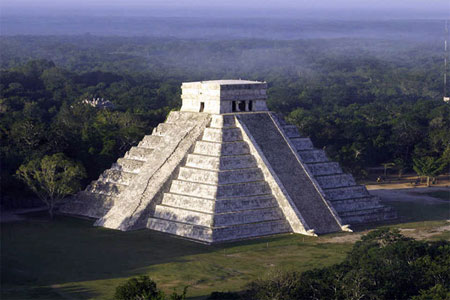
Mexico and India are at opposite sides in longitude. The correspondences were pointed out by B. G. Siddarth, director of the B. M. Birla Science Centre in Hyderabad. He also said the Hindu story of the churning of the ocean has been found in carvings in Mexico, as well Mayan representations of a tortoise carrying twelve pillars similar to Indian illustrations. Dr. Ganapati Sthapati of Chennai, a foremost expert on Vastu shatra, the ancient Hindu architecture, has visited the Mayan structures in Central America and found many similarities between the design and construction methods of the Mayans and that of the ancient Hindus.”
South of Mexico lays Guatemala, the major centre for the Mayans, yet they ventured north and south of this location, spreading their knowledge widely.
Mayan Language
Language is one of the major keys to determining the movement and migration of races. Two-thirds of all the aboriginal regional names of Mexico are either variations of the name of Lanka or Tamil names of West Indian regions. This is a major key to the understanding of their ancient Sri Lankan origins which, with southern Tamil India, extended much further south, now since sunk hundreds of thousands of years ago. When speaking of their origins, the Mayans (like the Hopis) had several names for their land: Shilanka (Xilanca) – an ancient name of Ceylon (Zeilan-Ka) Shikalanka (Xicalanca) – Ceylon. In Tamil, Shikalam.
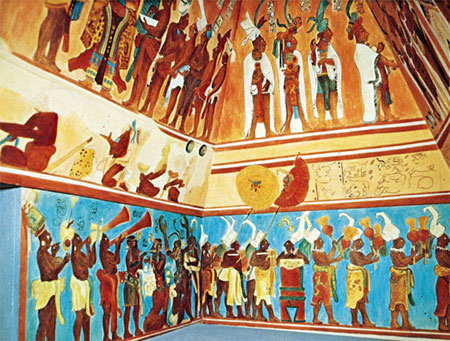
A Mayan culture hero was Ishbalanka (Xbalanca) meaning in Tamil, “Shiva of Lanka” who was supposed to have made the footprint on top of Adam’s Peak in Sri Lanka; modernly, in line with the prevailing Buddhist culture, it is known as (Gautama) ‘Buddha’s footprint.’ Palenque, the ancient capital of Guatamala, Palenke (Palenque) derives from the Tamil Pal-Lanka, meaning “Protectorate of Lanka.” Guatemala (the main habitat of the Mayans) may derive from Gautemala, meaning “A Subsidiary Land of Gautama Buddha.” Ceren was a name of Ceylon, some Mayan ruins in El Salvador are called Ceren. Mayon was one of the names of Ceylon’s cult religions, still existing among a few aboriginals living on the island.
Asuramaya and the Mayans
“The ancient Hindu and Mayan civilizations exhibit other interesting convergences. Hindu records say that a member of a great race which preceded ours, a highly-developed personage known as Asuramaya, learned all the basic cosmic cycles and used his knowledge to determine the durations of the various geological and cyclical periods of human evolution.
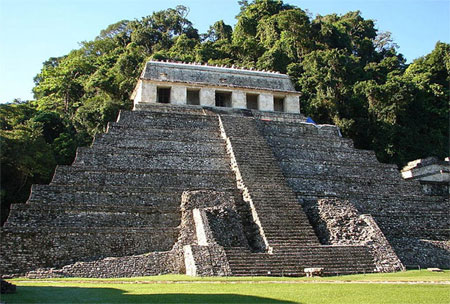
The chronology and computations of their still used Tamil calendar, say the Brahmans, are based upon the works of Asuramaya and upon carefully maintained collateral zodiacal records. Their most ancient extant work on astronomy, the Surya Siddhanta, says that Asuramaya lived toward the end of the Krita-yuga, a former age that ended approximately 2,165,000 years before the present. This would place Asuramaya at something less than 2.5 million years ago.”
The figures above are commensurate with the esoteric doctrine, whose source is the same. When the date of the start of the Kali Yuga for the Fifth Rootrace is considered (3,102 BC), then working back from there gives the following table:

Readers can observe where the Satya or Krita age ends (2,165,100 years), about one million years before the start of the first (Hindu) subrace of the Fifth Rootrace. The death of Krishna was supposed to have heralded the Kali Yuga and there may well have been a Krishna (as there have been many Buddhas) in 3,102 BC. But the Krishna referred to in The Mahabharata heralded the Kali Age of the (Fourth) Atlantean race a few million years ago. The date of 3,102 BC is the Kali Yuga of this, our Fifth (Aryan) Rootrace. This fact has caused confusion amongst scholars and is partially responsible for Hindu and Western pundits diminishing the time-scales of the Hindu scriptures.
Regarding Asuramaya, H.P. Blavatsky says:
“The best and most complete of all such calendars, at present, as vouched for by the learned Brahmins of Southern India, is the already mentioned Tamil calendar called the ‘Tirukkanda Panchanga,’ compiled, as we are told, from, and in full accordance with, secret fragments of Asuramâya’s data. As Asuramâya is said to have been the greatest astronomer, so he is whispered to have also been the most powerful ‘Sorcerer of the WHITE ISLAND, which had become BLACK with sin,’ i.e., of the islands of Atlantis.
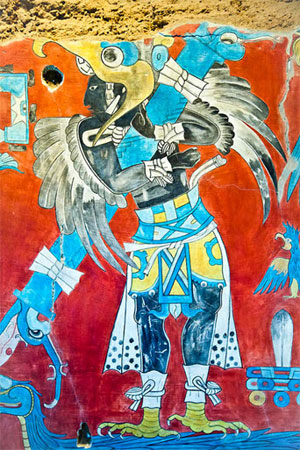
The ‘White Island’ is a symbolical name. Asuramâya is said to have lived (see the tradition of Jhána-bhaskara) in Romaka-pura in the West: because the name is an allusion to the land and cradle of the ‘Sweat-born’ of the Third Race. That land or continent had disappeared ages before Asuramâya lived, since he was an Atlantean; but he was a direct descendant of the Wise Race, the Race that never dies. Many are the legends concerning this hero, the pupil of Surya (the Sun-God) himself, as the Indian accounts allege… Asuramâya, ‘as great a magician as he was an Astrologer and an Astronomer.’”
The ‘third race’ is of course one of the latter subraces of the (third) Lemurian Rootrace, from where the Hindus and Egyptians have their ancient genesis. Due to the deterioration of the Atlanteans, what were once divine names of the Asuras in that race gradually became applied to those who had abused their God-given powers until, “Asura was the generic appellation of all the Atlanteans who were the enemies of the spiritual heroes of the Aryans (gods).”
The word Asura comes from Surya, Sanskrit for the sun; Asuramaya learned his art from studying and meditating upon the Sun. In the Yoga Sutras of Patanjali it is said that, “Through meditation, one-pointedly fixed upon the sun, will come a consciousness (or knowledge) of the seven worlds.” Maya is illusion, particularly in its densest manifestation upon the physical plane, the most powerful domain of the sorcerers of those days. All these events were occurring at the time of the gradual emergence of the Fifth (Aryan) Rootrace and the conflicts between the old and new races went on for some few million years after the original Mahabharata.
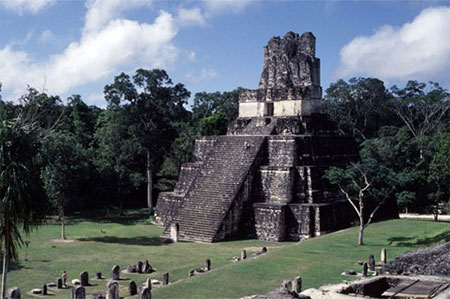
It is interesting to note that The Lord of the Rings is a story gleaned by J.R.R. Tolkien from our racial memory and is probably a fairly accurate account of those Atlantean days of war, monsters, giants, angels and magic. The chief sorcerer against whom Gandalf (the White) fights is Saruman, whose name is virtually an anagram of Asuramaya. The Hobbits are of course, Humanity and perhaps their six toes on either foot represent the coming Sixth Rootrace! In the emerging new race Asuramaya had his counterpart (and mentor) in Narada or ‘Pesh-Hun’, the old Vedic Rishi from whom he learned all, a highly elevated Mercurial type:
“… in Hindu Esotericism, Narada – who is called in Cis-Himalayan Occultism Pesh-Hun, the ‘Messenger,’… is the sole confidant and the executor of the universal decrees of Karma… who leads and guides human affairs from the beginning to the end of the Kalpa. ‘Pesh-Hun’ … is the mysterious guiding intelligent power, which gives the impulse to, and regulates the impetus of cycles, Kalpas and universal events. He is Karma’s visible adjuster on a general scale.
Narada surpasses Garga’s Guru in his knowledge of cyclic intricacies. It is he who has charge of our progress and national weal or woe. It is he who brings on wars and puts an end to them. In the old Stanzas Pesh-Hun is credited with having calculated and recorded all the astronomical and cosmic cycles to come, and with having taught the Science to the first gazers at the starry vault. And it is Asuramâya, who is said to have based all his astronomical works upon those records, to have determined the duration of all the past geological and cosmical periods, and the length of the all the cycles to come, till the end of this life-cycle, or the end of the seventh Race.
There is a work among the Secret Books, called the ‘Mirror of Futurity,’ wherein all the Kalpas within Kalpas and cycles within the bosom of Sesha, or infinite Time, are recorded. This work is ascribed to Pesh-Hun Narada. There is another old work which is attributed to various Atlanteans. It is these two Records which furnish us with the figures of our [The Hierarchy] cycles, and the possibility of calculating the date of cycles to come…
The chronology and computations of the Brahmin Initiates are based upon the Zodiacal records of India, and the works of the above-mentioned astronomer and magician – Asuramaya. The Atlantean zodiacal records cannot err, as they were compiled under the guidance of those who first taught astronomy, among other things, to mankind.”
Note one of Narada’s appellations is ‘The Messenger’ equivalent to Mercury, Hermes or the Egyptian Thoth. (Note the earlier reference to the Mayans coming from the ‘Naga tribe’.)
The Mayans: Master Astronomers
As noted earlier, the studies focused on the calendars of the two advanced civilizations. The Indus Valley inhabitants followed a calendar based on the movements of Jupiter, and the Mayans followed one based on the Venus. In the Puranas, a secondary Hindu scripture, Jupiter, Brihaspati, was acknowledged to be the leader of the gods, while Venus, Shukra, was the leader of the asuras.
The Mayans are well known for their astronomical accuracy through their studies of the cycles of Venus, yet their whole system of astronomy and cycles derives from their ancient Hindu past:
“Modern students of the ancient Mayan numerical glyphs have found that the dating of major series of events noted on Mayan Stelae invariably give such reckonings in terms of the time elapsed since a date known as 4 Ahau 8 Cumhu. They know that for the Maya chroniclers this date represented a commencement point in time-reckoning of such awesome magnitude that it was central to all else in subsequent Maya history; but they don’t know what it meant or why it was so important to the latter.
Among other ancient nations only one, the Hindu peoples of the Indian subcontinent, is known to have developed a system of calendrics accounting for such vast periods of time. For computing the age of the earth and various geological and other epochs, as well as the age of mankind, the learned Brahman caste still employs a Tamil calendar derived from archaic astronomical data, known as the ‘Tirukkanda Panchanga’” (The Secret Doctrine, II:49-51)
Other diverse commentators corroborate these facts:
“The Mayan culture flourished in Mesoamerica during the early Christian era, before being completely wiped out by the Spanish conquest. Astronomy played a significant role in Mayan culture. Venus in particular had a pre-eminent status. Testimony to this rich tradition is borne out by Mayan temple art and the few available Codices, or sacred books, of the Mayans. Western scholars have attempted to relate the Mayan concepts to those of Greek astronomy. The sidereal Mayan astronomy is more akin to the Hindu system and does not easily fit into the Greek model.”
The theories about Greek astronomy are related to the misapprehension of cycles by historians and researchers down the ages – both east and west. Greece is a much more modern and recent culture, India and the Mayans are very ancient. Confusion has arisen do to cross fertilisation of ideas between Greece and India in the past few thousand years, as well as the ‘Greek-centric’ view held by many western historians.
“Striking similarity is found between certain Mayan and Puranic stories, and their related astronomical interpretation. In the Puranas, Lord Vishnu is represented as resting on the serpent Ananta or Sesa, after having dissolved all creation. The serpent represents the eternity of time (Ananta), and the ‘remainder’ (Sesa) in subtle form, of Prakriti, the germ of all that has been and will be. After waking up from the Yoga Nidra, Vishnu rides on the eagle Garuda. Both Garuda and Sesa are shown in association with Vishnu in the temples of India.
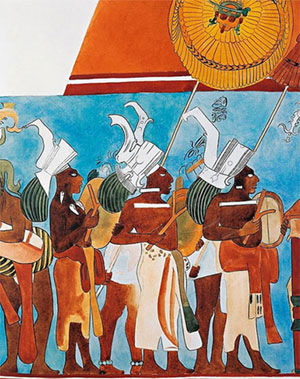
It is said that Garuda represents the Vedas and the solar deities, and Sesa represents the watery deities. The serpent [Naga] is of great significance in the Mayan culture also. A supreme example is the serpent of sunlight and shadow seen at Chichén Itzá. At the time of the equinoxes, as the Sun moves from east to west, a pattern of light and shadow appears on the west balustrade of the north stairway of the Castillo at Chichén Itzá. This display resembles a descending snake whose head is the monumental serpent head carved out of stone at the foot of the stairs. The feathered serpent represents the Mayan God Kukulcan, who is associated with rain water and new life, among other things. Kukulcan appears to be Sesa and Garuda combined into one.”
“In the book The Conquest of the Maya by J. Leslie Mitchell, he explains that the basis of the old Maya empire was not of the work of the ancestors of the present day Maya, but was an import from the same foreigners that built the palaces and temples of the Chams and Khmers in Cambodia, and the temples in Java. He also points out the similarities between the Maya rain-god Chac and the Vedic Indian Indra, and the Maya monkey-god and the Vedic Hanuman. The Vedic origin is further enhanced by the frequency that the elephant motif is found in Maya art, especially the earlier works of the Maya, such as at Copan, although the elephant never existed in the region.”
The reader will note that the temples of Cambodia are commented upon in the newsletter “Ancient Cambodia: Angkor Wat and the Egyptian Connection.”
The ancient Khmer (Cambodian) culture probably belongs to the second subrace of the Fifth Rootrace (5.2), the same as the Egyptians and Mayans, but of a different branchrace lineage. One is reminded of the vast extent of the Indian empire that stretched from South East Asia to Persia (Iran); it also extended southward to the old Tamil country, since sunk.
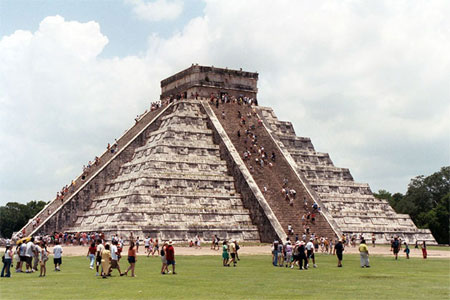
“One reason for these similarities between the Americas and India is that in ancient Vedic times there were two great architects, Visvakarma of the demigods or Aryans, and Maya of the asuras. Surya Siddhanta was revealed to Mayasura by Sun. The Mayan people, also known as technicians, were no doubt named as such because of being connected with this person named Maya or Mayasura and Maya Danava. They were a part of his clan or tribe. They had fallen away from the Vedic way of life and were sent or escaped to the region of Central America. They also carried with them much of the science of astronomy and navigation for which this Mayasura was known.
Mayasura’s knowledge is more fully explained in the classic work of Indian Vedic astronomy known as the Surya Siddhanta for which he is given credit. Many people have wondered from where the Mayan acquired their astronomical knowledge. This would explain how the Mayan people had such a high degree of understanding in astronomy, from which they also developed their calendar. The Mayan calendar was a science they had long developed, carrying it with them from their previous location and civilization.”
Note the reversal of Asuramaya’s name but the same historical details are intact. The Mayans were known as ‘technicians’ a very interesting word that denotes strong influence of the Fifth Ray of Science, which of course is related to astronomy. This ‘fifth aspect’ not only corresponds to the Fifth Rootrace and ‘fifth continent’ mentioned earlier but to possibly a fifth branchrace (clan/tribe) ‘signature’ such as 5.2.5 – the 5th branchrace of the second subrace of the Fifth Rootrace.
The second subrace of the Fifth Rootrace (5.2) came forth around 860,000 years ago – at the second great Atlantean flood and coincident with the migration from India that established the Egyptian civilisation on the Nile.
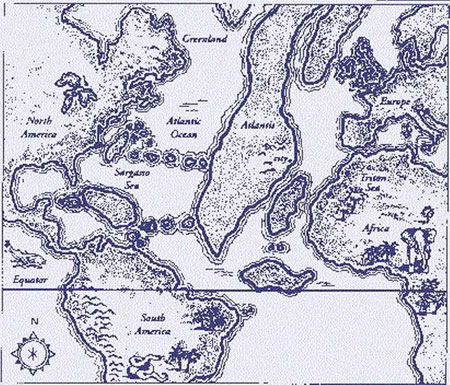
Atlantean Islands
This map is one of many speculations of the location of the Atlantean islands. It has been included to illustrate how it would not have been very difficult for the ancient Mayans (renowned mariners), to ‘island hop’ their way across the Atlantic from Africa to where Guatemala is today; if they came the same route as the Egyptians from India and kept heading west.
“Like the Vedic culture, the Maya had a pantheon of demigods, many of which have similarities to the Vedic deities. Mayan gods like Xiuhtechutli and Xipe Totec have their Vedic counterparts in Indra and Agni. Indra, like Xiuhtechutli, was the rain god and guardian of the Eastern Quadrant, and Agni, similar to Xipe Totec, was the god of sacrificial fire, born in wood and the life force of trees and plants. Then there is the Vedic Ushas, the beautiful goddess of Dawn or Sky, who is similar to the Mayan view of Venus, goddess of Dawn … Furthermore, hymn 121 of the book ten in the [Hindu] Rig Veda is very similar to the description of creation as found in the [Mayan] Popul Vuh.”
None of this pantheon of gods would be complete without the legendary Quetzalcoatl:
“A Mesoamerican Christ: Quetzalcoatl is to the New World what Christ is to Europe [or Krishna to India]: the center of a religious cosmology and the pre-eminent symbol of the civilized nations of Mesoamerica. Both were considered to be men who ascended into heaven upon their death; Christ to sit at the right hand of God, Quetzalcoatl to become the Morning Star [Venus]. Both were tempted by evil powers; Christ by Satan, Quetzalcoatl by the wizard-god Tezcatlipoca.
And both were prophesied to one day return to earth, Christ as the Prince of the Kingdom of Heaven, Quetzalcoatl as a god-king returned to claim his kingdom in Central Mexico. To understand the life and teachings of Jesus Christ is to understand Christianity, the root religion of what we refer to as Western Civilization. To understand the life and mystery of Quetzalcoatl is to understand the religious thought of what we call Mesoamerica.”
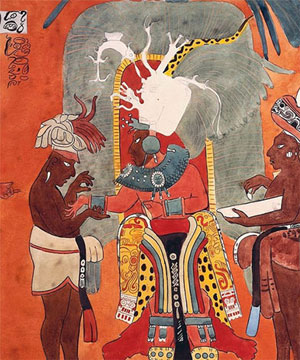
Mayan Calendar
“The Vedic, Maya, and Hopi calendars all describe our current age as the fourth world. The Maya and Hopi calendars also describe the ending of a great age around the year 2000 (several Mayan calendar cycles end at winter solstice, 2012). Mayan cycles describe the Earth’s Great Year (a ~24,000-year cycle caused by the Earth’s wobble) as well as an additional rotation of our sun and galaxy around Alcyon, central star of the Pleiades. The Maya are one of many cultures (as far-flung as the Australian Aborigines, the ancient Greeks, and several Native American nations) with stories about the Pleiades.”
“Incredibly, at the early Maya site of Izapa in southern Mexico, the galactic cosmology and a profound spiritual teaching are preserved. Izapa speaks to us of the Galactic Alignment in 2012 as a transformative nexus in time, a still-point turnabout, inviting us to reconnect with our cosmic heart and eternal source.”
“The doctrine of the World’s Ages (from Hindu Yugas) was imported into Pre-Columbian America … the Mexican sequence is identical with the Hindus… The essential fact remains that they were derived from a common source… It would be ridiculous to assert that such a strange doctrine was of spontaneous origin in different parts of the Old and New Worlds.”
The above passage is a more exoteric view but nonetheless testifies to the origin of Mayan astronomy. These yugas contain other yugas within them, or cycles within cycles:
“The Dvapara Yuga differs for each Race. All races have their own cycles, which fact causes a great difference. For instance, the Fourth Sub-Race of the Atlanteans was in its Kali Yuga, when destroyed, whereas the Fifth was in its Satya or Krita Yuga. [Approximately 4 million years ago.] The Aryan Race is now in its Kali Yuga [3,102 BC] , and will continue to be in it for 427,000 years longer, while various ‘family Races,’ called the Semitic, Hamitic, etc., are in their own special cycles. The forthcoming 6th Sub Race [of the Fifth Rootrace or 5.6] – which may begin very soon – will be in its Satya (golden) age while we reap the fruit of our iniquity in our Kali Yuga.”
These dark and golden ages (Kali and Satya) overlap as one cycle finishes and another starts. The above statement is confirmed in the Puranas where Lord Krishna tells Ganga Devi that a Golden Age will come in the Kali Yuga. Lord Krishna predicted that this Golden Age will start 5,000 years after the beginning of the Kali Yuga, and will last for 10,000 years.
The Mayan Calendar measures the unfolding evolution of consciousness – as do all cycles that are impelled by the rays, planets, yugas or zodiac signs; they all embody a much higher consciousness it is actually two calendars that are closely inter-related: The Tzolkin (Daily Calendar) of 260 days, and the Tun (Prophetic Calendar) of 360 days. These two ‘calendars’ intermesh like gears, the smaller Tzolkin with 260 ‘teeth’ (days) intermeshing with the larger Tun (360 ‘teeth’/days), then as the Tzolkin turns so does the Tun.
It takes 72 turns of the Tzolkin calendar (‘gear’) and 52 turns of the Tun calendar (‘gear’) for each ‘tooth’ (day) of each ‘gear’ (calendar) to come into contact. I.e. 18,720 days (72 x 260 or 52 x 360), or approximately 51 Gregorian calendar years. (18,720/365).
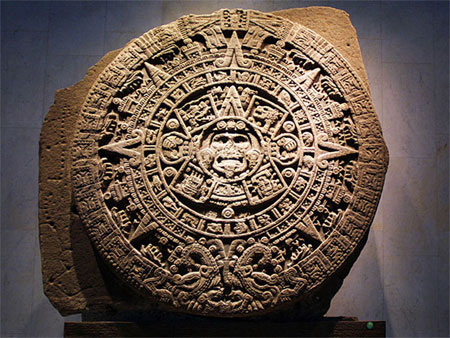
Mayan Calendar or Sunstone
The carvings in the stone represent the four cycles of creation and destruction. The skull at the center depicts the god, Tonatiuh, the fifth sun. The calendar was also adopted by the Aztec and Toltec nations after renaming the days and months.
The Maya of the Mayan Calendar (Maya = Illusion)
“One of the secrets of initiation is concerned with the apprehension of cycles, and with their duration … before a man is considered a true occultist.”
One problem with comprehension of the Mayan Calendar is the hype about it in ‘New Age’ circles. Esoterically the whole subject is ‘glamoured’ – there have been so many speculations, claims and distortions by academics, mystics and ‘new agers’.
The exact astronomical date in 2,012 is something that the general public tended to get somewhat fixated upon, creating confusion, fear and much futile speculation; this is a perennial problem and other ‘significant dates’, including the yearly cycle of eclipses, that continually attract superstitious and uninformed reactions. John Major Jenkins, a leading scholar of the Mayan Calendar, had the following to say:
“So, in point of fact, we have a previous testimonial of Don Alejandro, from an interview he did with reporters that was published as ‘The Mayan Worldview of the Universe’ by Patrisia Gonzales and Roberto Rodriguez, Universal Press Syndicate. The Denver Post, January 2, 2000. In it, we read:
‘Based on thousands of years of astronomical observation, a cataclysm is indeed predicted by indigenous elders, as opposed to ‘prophesized.’ No one is predicting that at the stroke of midnight, Dec, 20, 2012, the world will end. Instead, Mayan elders predict that the cataclysm can occur within a year or 100 years – and the cause would be something astronomical as opposed to metaphysical.’
[Jenkins continues…] I’ve always agreed with this idea that we should think of the 2012 end date as being a ‘zone’ stretching on the order of decades. I don’t agree with the above view that the end date is only an astronomical event, for the physical dimension and the metaphysical (or spiritual) dimension unfold in parallel. We further read in the interview that:
‘We don’t know what will happen in the next few days or in the next 12 years. What we do know is that it wouldn’t hurt to listen to the worlds of Don Alejandro who said that on Dec. 20, 2012 Mother Earth will pass inside the center of a magnetic axis and that it may be darkened with a great cloud for 60 or 70 hours and that because of environmental degradation, she may not be strong enough to survive the effects. ‘It will enter another age, but when it does, there will be great and serious events. Earthquakes, marimotos (tsunamis), floods, volcanic eruptions, and great illness on the planet Earth. Few survivors will be left.’”
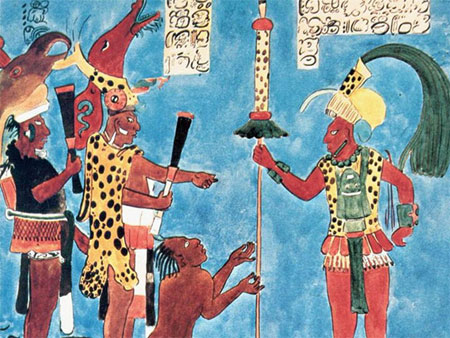
[Jenkins continues…] “Thus, beginning on December 20, as stated, the events stretch almost three full days (‘60 or 70 hours’) through December 21st. The Earth passing ‘inside the center of a magnetic axis’ is a striking description and sounds like the way I described the alignment in the last chapter to Maya Cosmogenesis 2012. ‘Darkened by a great cloud’ almost sounds like a reference to the dark-rift in the Milky Way. Notice the difference between this conception of ‘earth in the darkness’ and my alignment description – where I describe it as the sun passing through the dark-rift, through the ‘galactic axis,’ with different magnetic or gyroscopic effects on either side. I suppose Don Alejandro’s wording works fine, it’s just a translation or interpretation of where the effect is really to be felt (on Earth, ultimately) …
‘He [Carlos] said Mayan Daykeepers view the Dec. 21, 2012 date as a rebirth, the start of the World of the Fifth Sun. It will be the start of a new era resulting from and signified by the solar meridian crossing the galactic equator, and the earth aligning itself with the center of the galaxy. At sunrise on December 21, 2012 for the first time in 26,000 years the Sun raises to conjunct the intersection of the Milky Way and the plane of the ecliptic. This cosmic cross is considered to be an embodiment of the Sacred Tree, The Tree of Life, a tree remembered in all the world’s spiritual traditions. Some observers say this alignment with the heart of the galaxy in 2012 will open a channel for cosmic energy to flow through the earth, cleansing it and all that dwells upon it, raising all to a higher level of vibration.’”
Interesting to note that the winter solstice period (in the northern hemisphere) had its inherent symbolism of the ‘greatest darkness’ of winter extraordinarily amplified within the cosmic macrocosm in 2012. The winter solstice is a time of initiation where the candidate to the mysteries must ‘find their way through the dark’. The conjunction of the Sun with Pluto in December 2012 signified the darkness of the underworld experience, transformation and initiation. The Moon is conjunct Uranus in Aries, reflecting the new revolutionary cycle that will begin in consciousness. Perhaps Humanity has an opportunity to do this en masse? A shift that may occur several years around this date is confirmed by other sources:
“In the time of the Buddha and through the stimulation He produced there was a great gathering in of Arhats [4th degree Initiates]. These were men who had achieved liberation through self-initiated effort. This period, in our Aryan race, marked a climax for the East. Since then the tide of spiritual life has steadily flowed westward, and we may now look for a corresponding climax in the West, which will reach its zenith between the years 1965 and 2025.”
yogaesoteric
January 26, 2017
